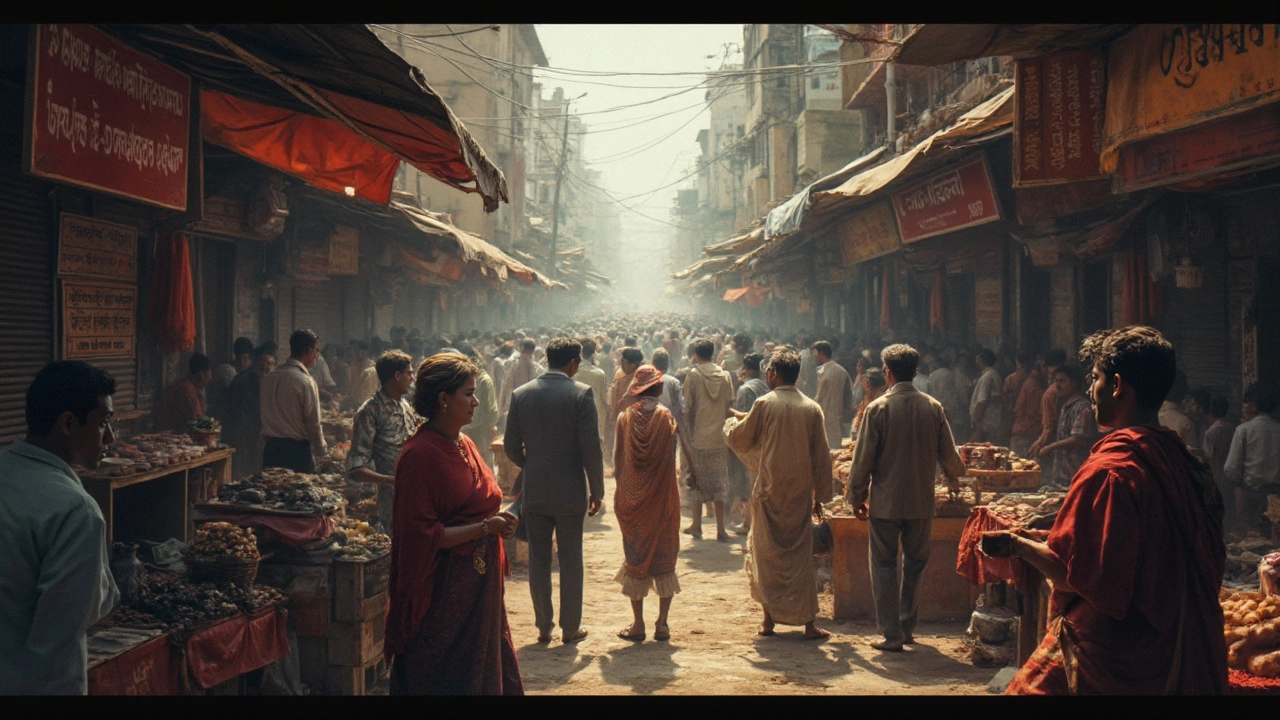Picture a group of people pulling strings behind the scenes, squeezing cash from businesses, shaking down politicians, or running illegal games like it’s an artform. Racketeering sounds like something ripped from a gritty crime flick, but in real life, it’s a massive, multi-billion-dollar problem that doesn’t just stay in the shadows. The word brings to mind everything from old-school mobsters in smoky backrooms to modern cybercriminals hiding behind keyboards. Racketeering shows up everywhere, from corporate boardrooms to mom-and-pop stores on the corner. People always think crime is simple, but racketeering’s got layers—twisted schemes that make your head spin and your wallet a whole lot lighter if you’re ever on the wrong end of one.
The Roots and Meaning of Racketeering
If you dig into history, racketeering goes back nearly a century, but the actual schemes date even further—before there were cars or telephones, shakedowns still happened. The term itself popped up in the 1920s, pretty much fueling the stereotype of cigar-chewing gangsters with pinstripe suits. It started with labor rackets, where mobs muscled in on unions to control wages or run illegal businesses, forcing workers and company owners to pay up, or else.
Sometimes it’s about protection money—pay the racketeer and "nothing bad happens" to your business. Sometimes it’s fake charities, Ponzi schemes, or even multi-level marketing operations that cross the line into organized deception. Now, thanks to the RICO Act, the law looks at racketeering as any organized criminal activity that’s repetitive and connected—basically, if it’s not a one-off, and people are working together to commit fraud or violence, you’re probably neck-deep in a racket.
The RICO Act of 1970 helped the FBI take aim at all types of racketeering, not just traditional mob activity. With it, police could break up organizations, seize assets, and put real pressure on the higher-ups—not just the muscle on the street. You might be surprised to learn that sports leagues, Wall Street firms, and even city governments have found themselves accused of racketeering at one point or another.
Organized Crime and Classic Rackets
The first category most people think of is "Protection Rackets." That’s the classic setup: organized criminals tell local business owners, “Pay us, or you won’t get protection from us—or anybody else.” It’s not a friendly offer. In cities like Chicago and New York during the 1930s, these operations controlled whole neighborhoods. You’d find racketeers visiting bakeries, cleaning companies, or nightclubs, and nobody wanted to test their luck by saying no. If they did, windows mysteriously shattered or deliveries got "lost."
But racketeering isn’t only about local thugs. There’s a bigger picture: organized sports betting, illegal gambling rings, and loan sharking—where short-term loans come with sky-high interest and a side of threats. A lot of people got in way over their heads, thinking they could outsmart the system, but the house always wins. Even after the mob’s heyday in the ‘60s, these rackets just got smarter and harder to spot. They use fake businesses and shell companies to wash money, so the real players never show their faces. And when international crime syndicates join the party, you’re looking at rackets worth billions. Investigations have uncovered soccer game-fixing rackets stretching from Italy to Singapore, with players and refs bribed to tilt matches in the favor of gambling lords. The whole idea is to build a system of ongoing crime—one that keeps the cash flowing nonstop.
Take labor racketeering. That was the backbone of organized crime for decades. Mobsters would stroll into a union hall, rig elections, and skim from pension funds. Factory owners and politicians sometimes played along, either out of greed or pure fear. Then you had "numbers games"—illegal lotteries that became mainstays in urban neighborhoods. They’re simple, but wildly profitable. The scheme was so widespread that even parents would play, hoping for a lucky break. When the feds started cracking down, these rackets simply shifted to newer, safer operations.

Fraud, Scams, and White-Collar Racketeering
Move over, traditional gangsters—today’s racketeers wear suits and work from glass towers. White-collar racketeering tears apart lives without ever raising a fist. These types focus on fraud, where organizations run series of scams—think Ponzi schemes (shoutout to Bernie Madoff and his $65-billion disaster), mortgage fraud, or health insurance scams. These people create fake companies, forge documents, and con banks or elderly folks into handing over everything they own.
Around the world, authorities report that financial scams rack up staggering costs. For instance, the FBI reported in 2024 that total losses from business email compromise—basically tricking companies into wiring money overseas—exceeded $4 billion in just a year. It’s not about muscle; it’s about manipulation. Crooks will run investment seminars promising 50% returns or sell worthless crypto coins, raking in money from hopeful dreamers. And while a burglary leaves a broken window, fraud can leave victims devastated for decades.
One wild fact: white-collar racketeering can crater whole industries. Corporate leaders at Enron pulled one of the ugliest accounting rackets ever, making the company look profitable while piling up billions of hidden debt. The fallout? Thousands lost jobs, pensions evaporated, and the ripple effects hit average folks all over the country. This kind of scheming is sophisticated. Syndicates hire lawyers, accountants, and tech experts to cover tracks. Sometimes, they even run charities that exist only to funnel donations back to the crime bosses. In some cases, law enforcement needs to team up with international agencies just to track down the source of the fraud.
| Type | Example Scheme | Estimated Yearly Impact (USD) |
|---|---|---|
| Protection Racket | Local business extortion | $20 billion |
| Financial/Fraud Racket | Ponzi/Mortgage scams | $80 billion |
| Cyber Racketeering | Business email scams | $4+ billion |
If you’re running a business, double-check background checks. Racket-loving fraudsters love to slip in as consultants or accountants, then bleed companies from the inside. Don’t trust offers that feel too good to be true, especially if they want payments in shady ways or ask for a lot of personal information upfront.
21st Century Rackets: Cybercrime and Beyond
The newest threat? Cybercrime rackets. Keyboard warriors have replaced baseball bats with malware and ransomware. This is the world of digital protection rackets. Picture this: you wake up, fire up your computer, and see a message telling you your files are locked until you pay a fee—usually in cryptocurrency so it can’t be traced. The FBI calls this one of the fastest-growing racketeering methods. In 2023, ransomware attacks cost businesses over $7 billion globally, affecting everything from small clinics to major hospitals and even oil pipelines.
Cyber racketeers build international networks to target victims all over the globe. They're nimble, usually working in cells that sometimes never meet in person. It's a low-risk, high-reward operation because it’s hard to track and even harder to prosecute when criminals hide in countries without extradition treaties.
It’s not just files—they can target industrial controls, hospital systems, or even municipal governments. In 2024, a major city’s water supply got hit, forcing local authorities to pay a ransom or risk chaos. Most attacks come through simple email phishing—one bad click and it’s game over. And cyber rackets keep evolving. Today, racketeers rent out "Ransomware-as-a-Service" to wannabe hackers. For a monthly fee, anyone can run their own shakedown, no tech skills required. This has turned racketeering into a startup industry, with criminal forums advertising payment guarantees and customer support.
If you’re reading this at work, quick tip—don’t open random attachments, and always keep a backup. It’s simple, but these little habits can keep your business off a hacker’s hit list. Authorities worldwide are scrambling to keep up with these new rackets, but the best weapon is still a cautious eye and basic cyber hygiene. Racketeering right now is less about breaking kneecaps and more about exploiting our digital blind spots.
With these three racketeering types—old-school organized crime, sophisticated fraud, and modern cybercrime—the crime world keeps finding new ways to stay one step ahead. If crime movies taught me anything (and, alright, maybe my kids are right, I’ve streamed a few too many mob flicks), rackets change fast, and nobody’s really safe from being targeted. Stay sharp, double-check deals, and remember, if someone offers you "protection" these days, make sure it isn’t the start of a real-life thriller you can’t escape from.
